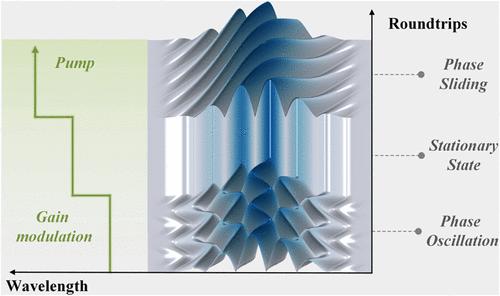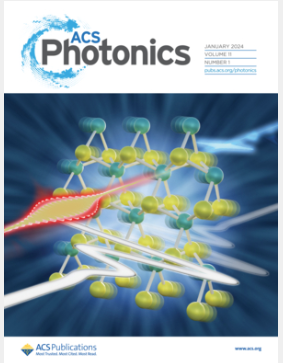Gain-Dominated Phase Customization Enables the Hybrid Quaternary Encoding of Dissipative Soliton Molecules
IF 6.5
1区 物理与天体物理
Q1 MATERIALS SCIENCE, MULTIDISCIPLINARY
引用次数: 0
Abstract
Soliton molecules constitute a fundamental structure in nonlinear optics, which presents a striking analogy with matter particles. The multiplicity of degrees of freedom endows them with the artificial manipulation of molecular patterns, yielding compelling scenarios toward on-demand harnessing for applied stimuli, in which the molecular phase gradually reveals its remarkable controllability. Here, we report a quaternary encoding scheme relying upon gain-dominated phase customization. Initially, via artificial modulation of laser gain, the deterministic harnessing of the type and velocity of molecular phase evolution is well implemented, in which one phase-oscillating state, one stationary state, and two phase-sliding states with different evolving velocities can be reliably switched to each another. Moreover, taking the four states in different phase regions as the encoding symbols, the hybrid quaternary encoding format is implemented. Due to the distinct characteristics of each phase region, this scheme can facilitate the recognition of the code symbols, therefore possessing high fidelity and high antijamming capability. Particularly, incorporating both type and velocity of molecular phase as characteristics of the code elements endows the hybrid encoding scheme with the potential for dimensional scalability. All of these results experimentally demonstrate the encoding capabilities of relative phase as well as highlight their potential applications in large-capacity all-optical storage and soliton communication.

求助全文
约1分钟内获得全文
求助全文
来源期刊

ACS Photonics
NANOSCIENCE & NANOTECHNOLOGY-MATERIALS SCIENCE, MULTIDISCIPLINARY
CiteScore
11.90
自引率
5.70%
发文量
438
审稿时长
2.3 months
期刊介绍:
Published as soon as accepted and summarized in monthly issues, ACS Photonics will publish Research Articles, Letters, Perspectives, and Reviews, to encompass the full scope of published research in this field.
 求助内容:
求助内容: 应助结果提醒方式:
应助结果提醒方式:


